The role of Chief Information Security Officer (CISO) has transformed from a purely technical position into one of the most critical executive roles in modern organizations. In 2025, CISOs command some of the highest salaries in the cybersecurity industry, with median compensation reaching $584,000 in the United States, reflecting the critical importance of cybersecurity leadership in today’s threat landscape. Let’s deep dive into how to become a CISO.
This comprehensive guide provides everything you need to know about becoming a CISO, from essential skills and certifications to career strategies and market insights that will position you for success in this high-impact executive role.
Table of Contents
Understanding How to Become a CISO and Modern Roles
The CISO position in 2025 has evolved far beyond traditional IT security management. Today’s CISOs are strategic business leaders who must balance technical expertise with executive leadership capabilities. They serve as the bridge between complex cybersecurity challenges and business objectives, translating technical risks into language that boards and executives can understand and act upon.
Core Responsibilities of Modern CISOs
Strategic Security Leadership: CISOs develop and execute comprehensive cybersecurity strategies that align with business goals while maintaining robust defenses against evolving threats. This includes creating security roadmaps, establishing governance frameworks, and ensuring that security initiatives support rather than hinder business innovation.
Risk Management and Compliance: Modern CISOs must navigate an increasingly complex regulatory landscape, ensuring compliance with frameworks like GDPR, CCPA, SOX, HIPAA, and industry-specific regulations. They conduct risk assessments, implement control frameworks, and communicate risk posture to stakeholders in business terms.
Incident Response and Crisis Management: When security incidents occur, CISOs lead organizational response efforts, coordinating with legal teams, public relations, law enforcement, and regulatory bodies. They must maintain composure under pressure while making critical decisions that can impact the organization’s reputation and financial health.
Business Integration and Enablement: Rather than being seen as a roadblock, successful CISOs position security as a business enabler. They work closely with product development, operations, and other departments to embed security into business processes without hindering productivity or innovation.
Team Leadership and Talent Development: CISOs are responsible for building and maintaining high-performing security teams. This includes recruiting specialized talent, developing team capabilities, managing budgets, and creating career development paths that retain top performers in a competitive market.
Board and Executive Communication: Perhaps one of the most critical skills, CISOs must effectively communicate with board members and C-suite executives who may lack technical backgrounds. This requires translating complex security concepts into business language and presenting clear, actionable recommendations.
Industry-Specific CISO Roles
Financial Services CISOs: Face unique challenges related to regulatory compliance (PCI DSS, SOX), fraud prevention, and protecting sensitive financial data. They must also navigate the complexities of fintech integration and digital transformation while maintaining strict security standards.
Healthcare CISOs: Must ensure HIPAA compliance while protecting patient data and maintaining the availability of critical healthcare systems. They face unique challenges related to medical device security, telemedicine platforms, and the integration of legacy systems with modern technologies.
Technology Company CISOs: Often focus on product security, intellectual property protection, and securing cloud-native infrastructures. They must balance security requirements with rapid product development cycles and may be involved in privacy-by-design initiatives.
Government and Defense CISOs: Work within complex regulatory frameworks and must often obtain and maintain security clearances. They face unique challenges related to national security, classified information protection, and compliance with frameworks like NIST and FedRAMP.
Essential Skills for CISO Success
Technical Expertise Requirements
While CISOs don’t need to be hands-on technical experts, they must maintain deep understanding of cybersecurity fundamentals and emerging technologies. The technical knowledge required for CISO success includes:
Security Architecture and Design: Understanding how to design and implement security controls across complex enterprise environments, including hybrid cloud infrastructures, microservices architectures, and emerging technologies like IoT and edge computing. This includes knowledge of defense-in-depth strategies, zero-trust architectures, and secure development practices.
Threat Intelligence and Risk Assessment: Staying current with evolving threat landscapes, understanding adversary tactics, techniques, and procedures (TTPs), and translating threat intelligence into actionable security measures. This includes knowledge of threat modeling, vulnerability management, and security metrics that demonstrate program effectiveness.
Emerging Technology Security: Maintaining awareness of how artificial intelligence, machine learning, quantum computing, blockchain, and other emerging technologies impact both security risks and defensive capabilities. Understanding the security implications of technologies like 5G, edge computing, and autonomous systems.
Cloud Security and DevSecOps: Deep understanding of cloud security models, container security, infrastructure as code, and DevSecOps practices. This includes knowledge of major cloud platforms (AWS, Azure, GCP) and their security services, as well as multi-cloud and hybrid cloud security strategies.
Compliance and Regulatory Frameworks: Mastering regulatory requirements such as GDPR, CCPA, SOX, HIPAA, PCI DSS, and industry-specific standards. Understanding how to implement controls that satisfy multiple frameworks simultaneously while maintaining operational efficiency.
Security Tools and Technologies: Familiarity with enterprise security tools including SIEM platforms, endpoint detection and response (EDR), security orchestration and automated response (SOAR), vulnerability management platforms, and identity and access management (IAM) solutions.
Business and Leadership Skills
Modern CISOs must excel in business leadership, often requiring stronger business acumen than technical expertise:
Strategic Thinking and Planning: Ability to develop long-term security strategies that support business growth while managing risk tolerance and budget constraints. This includes understanding business models, competitive landscapes, and how security can create competitive advantages.
Financial Management and ROI Analysis: Understanding budgeting, cost-benefit analysis, and return on investment calculations to justify security investments and demonstrate value to the organization. This includes knowledge of security metrics, KPIs, and how to present financial justifications for security initiatives.
Executive Communication and Presentation: Translating technical security concepts into business language for executives, board members, and stakeholders who may lack technical backgrounds. This includes the ability to create compelling presentations that drive decision-making and secure resources.
Project and Program Management: Leading complex, multi-departmental security initiatives while managing timelines, resources, and stakeholder expectations. This includes understanding project management methodologies, change management, and how to coordinate across different organizational functions.
Crisis Management and Decision Making: Remaining calm under pressure while coordinating response efforts during security incidents or organizational crises. This includes the ability to make rapid decisions with incomplete information and communicate effectively during high-stress situations.
Vendor Management and Procurement: Managing relationships with security vendors, evaluating security solutions, and making procurement decisions that balance cost, functionality, and risk. This includes understanding contract negotiations, service level agreements, and vendor risk management.
Interpersonal and Soft Skills
The human element of cybersecurity leadership cannot be understated:
Influence and Persuasion: Building consensus across departments and convincing stakeholders to adopt security measures that may initially seem burdensome. This includes understanding organizational dynamics, stakeholder motivations, and how to build coalitions for security initiatives.
Emotional Intelligence and Team Management: Understanding team dynamics, managing stress, and maintaining morale during high-pressure situations. This includes the ability to motivate diverse teams, manage conflict, and create positive team cultures.
Continuous Learning and Adaptability: Staying current with rapidly evolving technology, threats, and business practices while encouraging learning within their teams. This includes maintaining curiosity, embracing change, and fostering innovation within security programs.
Cultural Awareness and Global Perspective: Understanding how security practices must adapt to different organizational cultures, especially in global enterprises. This includes awareness of cultural differences, regulatory variations across jurisdictions, and how to implement consistent security standards across diverse environments.
Negotiation and Conflict Resolution: Managing competing priorities, resolving conflicts between business needs and security requirements, and negotiating solutions that satisfy multiple stakeholders. This includes understanding when to compromise and when to take firm positions on security requirements.
Career Path Strategies
Traditional Technical Progression Route
Many successful CISOs follow a technical progression that builds deep cybersecurity expertise over time:
Entry Level (0-3 years) – Foundation Building:
- Security Analyst/SOC Analyst: Gain hands-on experience with security tools, incident response, and threat detection. Develop skills in log analysis, threat hunting, and security monitoring.
- Network Security Specialist: Focus on network security technologies, firewall management, and intrusion detection systems.
- Penetration Tester: Develop offensive security skills and understanding of attack methodologies.
- Compliance Analyst: Learn regulatory frameworks and audit processes.
Mid-Level (3-7 years) – Specialization Development:
- Security Engineer: Design and implement security solutions, develop security architectures, and work on complex technical projects.
- Security Architect: Focus on enterprise security design, risk assessment, and security standards development.
- Security Consultant: Gain exposure to multiple industries and security challenges while developing client-facing skills.
- Incident Response Manager: Lead incident response efforts and develop crisis management capabilities.
Senior Level (7-12 years) – Leadership Transition:
- Senior Security Architect: Lead security architecture initiatives and mentor junior staff.
- Security Program Manager: Manage security programs, budgets, and cross-functional initiatives.
- Principal Security Consultant: Develop thought leadership and industry expertise.
- Security Team Lead: Begin managing teams and developing leadership skills.
Executive Level (12+ years) – Strategic Leadership:
- Security Manager/Director: Manage security teams, budgets, and strategic initiatives.
- Deputy CISO/Assistant CISO: Gain executive experience while supporting the CISO role.
- Security VP: Lead enterprise-wide security programs and represent security at the executive level.
- CISO: Achieve the top security leadership role with full strategic responsibility.
Business-Focused Career Route
An increasingly common and successful path involves professionals with strong business backgrounds who develop security expertise:
Business Foundation Building:
- Risk Management: Professionals with backgrounds in enterprise risk management, operational risk, or business continuity who understand organizational risk frameworks.
- Audit and Compliance: Internal auditors, compliance officers, or external auditors who understand regulatory requirements and control frameworks.
- IT Management: IT directors, infrastructure managers, or technology leaders who understand business technology needs and constraints.
- Management Consulting: Business consultants who understand organizational dynamics, change management, and strategic planning.
Security Knowledge Development:
- Executive Education: Pursue cybersecurity-focused MBA programs, executive certificates, or intensive training programs that provide security knowledge while building business acumen.
- Industry Certifications: Obtain relevant certifications like CISSP, CISM, or CISA to demonstrate security knowledge and commitment to the field.
- Mentorship and Coaching: Work with experienced CISOs or security leaders who can provide guidance on technical aspects of security leadership.
Hybrid Role Development:
- GRC (Governance, Risk, and Compliance): Positions that bridge business and security concerns, providing exposure to security frameworks while maintaining business focus.
- Business Continuity and Disaster Recovery: Roles that involve crisis management, risk assessment, and business impact analysis.
- IT Risk Management: Positions that focus on technology risk assessment, vendor management, and IT governance.
- Privacy Officer: Roles that involve data protection, privacy compliance, and regulatory management.
Executive Transition:
- Security Leadership Roles: Move into security leadership positions where business acumen is highly valued and technical teams can provide specialized expertise.
- Cross-Functional Leadership: Take on roles that require coordination between security and business functions, such as digital transformation initiatives or merger and acquisition projects.
Consulting and External Experience Path
Building diverse experience across multiple organizations and industries:
Cybersecurity Consulting:
- Security Consulting Firms: Working with firms like Deloitte, PwC, KPMG, or specialized security consultancies provides exposure to various industries, security challenges, and organizational structures.
- Risk Assessment and Compliance: Conducting security assessments, compliance audits, and risk evaluations for multiple clients builds broad industry knowledge.
- Incident Response Consulting: Providing incident response services develops crisis management skills and exposure to various types of security incidents.
- Advisory Services: Providing strategic security advice to C-suite executives and boards develops executive communication skills.
Vendor and Technology Experience:
- Security Vendor Roles: Experience with security vendors provides deep product knowledge and understanding of how different solutions address enterprise challenges.
- Sales Engineering: Technical sales roles develop communication skills and business acumen while maintaining technical knowledge.
- Product Management: Security product management roles develop strategic thinking and market understanding.
- Technical Account Management: Managing relationships with enterprise customers provides insights into customer challenges and business requirements.
Government and Military Experience:
- Military Cybersecurity: Military experience provides unique perspectives on national security, structured approaches to security, and leadership development.
- Government Agencies: Experience with agencies like DHS, NSA, or FBI provides insights into threat intelligence, incident response, and regulatory compliance.
- Defense Contractors: Working with defense contractors provides experience with classified systems, government compliance requirements, and large-scale security operations.
Academic and Research Experience:
- University Research: Involvement in cybersecurity research provides insights into emerging threats, new technologies, and academic perspectives on security challenges.
- Think Tanks: Working with policy think tanks or research organizations develops strategic thinking and policy perspectives.
- Teaching and Training: Educational roles develop communication skills and deep knowledge of security principles.
Essential Certifications and Education
Premier Cybersecurity Certifications
CISSP (Certified Information Systems Security Professional): The CISSP certification is widely regarded as the gold standard for senior security professionals. CISSP candidates must demonstrate a minimum of 5 years of full-time security experience in two of the eight domains of the Common Body of Knowledge (CBK). The eight domains include:
- Security and Risk Management
- Asset Security
- Security Architecture and Engineering
- Communication and Network Security
- Identity and Access Management
- Security Assessment and Testing
- Security Operations
- Software Development Security
The CISSP demonstrates broad knowledge across all aspects of cybersecurity and is particularly valuable for those seeking executive-level positions.
CISM (Certified Information Security Manager): The CISM certification focuses specifically on management and governance aspects of information security programs. CISM requires a minimum of five years of professional work experience in information security management. The CISM’s focus centers on the skills a corporate security manager may need, such as governance issues, incident response and general IT risk management.
The four CISM domains include:
- Information Security Governance
- Information Risk Management
- Information Security Program Development and Management
- Information Security Incident Management
CISA (Certified Information Systems Auditor): The CISA certification is valuable for understanding audit processes and compliance requirements. It focuses on auditing, control, and assurance skills that are essential for CISOs who must work with internal and external auditors.
CCISO (Certified Chief Information Security Officer): The EC-Council CCISO certification is specifically designed for current and aspiring CISOs. Candidates who do not have 5 years of experience in three of the C|CISO domains but have 2 years of experience in at least 1 domain (or who currently hold either the CISSP, CISM or CISA certifications) are qualified for the Associate C|CISO program.
Advanced and Specialized Certifications:
- CISSP-ISSMP (Information Systems Security Management Professional): Advanced certification for senior managers and executives
- CISSP-ISSAP (Information Systems Security Architecture Professional): Focuses on security architecture and design
- CRISC (Certified in Risk and Information Systems Control): Emphasizes risk management and control frameworks
- CGEIT (Certified in the Governance of Enterprise IT): Focuses on IT governance and strategic alignment
Cloud Security Certifications
As organizations increasingly adopt cloud technologies, cloud security expertise has become essential:
AWS Security Certifications:
- AWS Certified Security – Specialty: Demonstrates expertise in securing AWS environments
- AWS Certified Solutions Architect: Understanding of AWS architecture and security best practices
Microsoft Azure Security Certifications:
- Microsoft Certified: Azure Security Engineer Associate: Focuses on Azure security implementation and management
- Microsoft Certified: Azure Solutions Architect Expert: Comprehensive understanding of Azure architecture and security
Google Cloud Security Certifications:
- Google Cloud Professional Cloud Security Engineer: Demonstrates expertise in Google Cloud security
- Google Cloud Professional Cloud Architect: Understanding of Google Cloud architecture and security best practices
Multi-Cloud and Vendor-Neutral Certifications:
- Certificate of Cloud Security Knowledge (CCSK): Vendor-neutral cloud security certification
- Certified Cloud Security Professional (CCSP): Advanced cloud security certification from (ISC)²
Educational Background and Advanced Degrees
Master’s Degree Programs:
- MBA with Cybersecurity Focus: Combines business acumen with security knowledge, ideal for executive-level positions
- Master’s in Cybersecurity: Provides deep technical knowledge and research skills
- Master’s in Information Systems: Broader IT management perspective with security specialization options
- Master’s in Risk Management: Focuses on enterprise risk management with security applications
Executive Education Programs:
- Harvard Business School Executive Education: Offers cybersecurity leadership programs for executives
- Stanford Executive Education: Provides technology leadership programs with security components
- Wharton Executive Education: Focuses on business strategy and risk management
- MIT Sloan Executive Education: Offers technology and innovation leadership programs
Doctorate and Research Degrees:
- PhD in Cybersecurity: For those interested in research, academia, or thought leadership
- Doctor of Business Administration (DBA): Applied research degree combining business and security
- JD (Juris Doctor): Legal education increasingly valuable for compliance and regulatory issues
Professional Development and Continuing Education
Industry Conferences and Events:
- RSA Conference: Premier cybersecurity conference with leadership tracks
- Black Hat and DEF CON: Technical conferences with cutting-edge security research
- ISC2 Security Congress: Focus on security management and leadership
- ISACA Conferences: Governance, risk, and compliance focus
Professional Organizations and Memberships:
- ISC2: Leading cybersecurity professional organization
- ISACA: Focus on governance, risk, and compliance
- CISA (Cybersecurity and Infrastructure Security Agency): Government cybersecurity organization
- InfraGard: Partnership between FBI and private sector
- Cloud Security Alliance (CSA): Focus on cloud security best practices
Continuous Learning Requirements: Most certifications require continuing professional education (CPE) credits:
- CISSP: 120 CPE credits over 3 years
- CISM: 20 CPE credits per year, 120 over 3 years
- CISA: 20 CPE credits per year, 120 over 3 years
CISO Salary and Compensation Trends
Current Market Compensation
The CISO role commands some of the highest salaries in the cybersecurity industry, reflecting the critical importance of security leadership. In the United States, the median salary for a CISO has risen to $584,000 this year, representing a 23% increase from 2020 and 15% from last year. However, CISO salary increases are slowing down, with average total compensation for CISOs up 11% this year, but down from a 14% average increase in 2022.
Salary Ranges by Experience Level:
- Entry-Level CISO (rare, typically internal promotions): $200,000 – $300,000
- Mid-Level CISO (3-5 years CISO experience): $300,000 – $500,000
- Senior CISO (5+ years CISO experience): $500,000 – $800,000
- Top-Tier CISO (Fortune 500, high-risk industries): $800,000 – $1,200,000+
Geographic Variations:
- San Francisco Bay Area: $650,000 – $1,200,000
- New York City: $600,000 – $1,000,000
- Washington DC: $550,000 – $900,000
- Chicago: $500,000 – $800,000
- Dallas: $450,000 – $750,000
- Remote/Distributed: $400,000 – $700,000
Industry-Specific Compensation
Financial Services: Typically offers the highest CISO compensation due to regulatory requirements and high-value targets:
- Large Banks: $800,000 – $1,500,000
- Investment Firms: $700,000 – $1,200,000
- Insurance Companies: $600,000 – $1,000,000
- Credit Card Companies: $700,000 – $1,300,000
Technology Companies: Competitive compensation with significant equity components:
- Large Tech (FAANG): $700,000 – $1,200,000 + equity
- Mid-size Tech: $500,000 – $800,000 + equity
- Startups: $300,000 – $600,000 + significant equity
Healthcare: Growing demand due to increasing cyber threats:
- Large Health Systems: $500,000 – $800,000
- Pharmaceutical Companies: $600,000 – $900,000
- Healthcare Technology: $550,000 – $850,000
Government and Defense: Lower base salaries but strong benefits:
- Federal Government: $200,000 – $400,000 + benefits
- Defense Contractors: $400,000 – $700,000
- State and Local Government: $150,000 – $300,000
Compensation Components
Base Salary: Typically represents 60-70% of total compensation, providing stability and predictability.
Annual Bonus: Performance-based bonuses typically range from 25-50% of base salary, tied to security metrics, business objectives, and individual performance.
Equity Compensation: Stock options, restricted stock units (RSUs), or other equity instruments, particularly common in technology companies and startups.
Long-Term Incentives: Multi-year incentive plans that align executive compensation with long-term business success and security program effectiveness.
Benefits and Perquisites:
- Health Insurance: Comprehensive medical, dental, and vision coverage
- Retirement Plans: 401(k) matching, pension plans, or other retirement benefits
- Executive Perks: Car allowances, executive insurance, flexible work arrangements
- Professional Development: Conference attendance, certification maintenance, executive coaching
Factors Affecting CISO Compensation
Organization Size and Complexity:
- Revenue: Larger organizations typically pay higher salaries
- Employee Count: More employees generally correlate with higher compensation
- Geographic Footprint: Global organizations often pay premiums for international experience
- Technical Complexity: Complex IT environments command higher salaries
Industry Risk Profile:
- High-Risk Industries: Financial services, healthcare, and critical infrastructure pay premiums
- Regulatory Requirements: Heavily regulated industries offer higher compensation
- Data Sensitivity: Organizations handling sensitive data pay more for security leadership
- Threat Landscape: Industries facing advanced threats offer competitive packages
Individual Qualifications:
- Experience Level: More years of CISO experience command higher salaries
- Educational Background: Advanced degrees and prestigious institutions can increase compensation
- Certifications: Relevant certifications demonstrate expertise and commitment
- Track Record: Proven success in previous roles significantly impacts salary negotiations
- Industry Recognition: Thought leadership and industry visibility can command premiums
Building Your Professional Network
Industry Connections and Relationships
Peer Networks: Building relationships with other security executives is crucial for career advancement and knowledge sharing. Key networking opportunities include:
- CISO Forums: Local and regional CISO forums provide opportunities to connect with peers facing similar challenges
- Industry Meetups: Regular attendance at cybersecurity meetups and user groups in your area
- Executive Roundtables: Invitation-only executive roundtables that focus on strategic security issues
- Online Communities: Platforms like LinkedIn groups, Slack communities, and specialized forums for security leaders
Vendor and Partner Relationships: Maintaining professional relationships with security vendors and service providers:
- Solution Providers: Building relationships with key vendors while maintaining independence and avoiding conflicts of interest
- System Integrators: Connecting with partners who can help implement security solutions
- Consulting Firms: Relationships with consulting firms that can provide specialized expertise
- Legal and Compliance Partners: Connections with law firms and compliance specialists who understand security requirements
Academic and Research Connections: Engaging with universities and research institutions:
- University Partnerships: Collaborating with academic programs to recruit talent and stay current with research
- Research Institutions: Connections with think tanks and research organizations focused on cybersecurity
- Standards Bodies: Participation in standards organizations like NIST, ISO, or industry-specific groups
- Policy Organizations: Engagement with policy organizations that influence cybersecurity regulations
Professional Organizations and Memberships
Primary Security Organizations:
- ISC2: The premier cybersecurity professional organization with local chapters worldwide
- ISACA: Focus on governance, risk, and compliance with strong executive networks
- SANS Institute: Technical training organization with executive leadership programs
- CSA (Cloud Security Alliance): Specialized focus on cloud security with executive working groups
Industry-Specific Organizations:
- FS-ISAC (Financial Services Information Sharing and Analysis Center): For financial services security professionals
- H-ISAC (Health Information Sharing and Analysis Center): Healthcare security focus
- OT-ISAC (Operational Technology Information Sharing and Analysis Center): Industrial and critical infrastructure security
- MS-ISAC (Multi-State Information Sharing and Analysis Center): Government and public sector security
Executive and Leadership Organizations:
- Executive Networks International: Executive networking organization with security leadership focus
- Young Presidents’ Organization (YPO): For executives under 45 leading significant organizations
- Chief Executive Network: Peer networking for C-suite executives
- Vistage International: Executive coaching and peer advisory organization
Mentorship and Advisory Relationships
Finding Mentors: Identifying experienced leaders who can provide guidance:
- Current CISOs: Connecting with successful CISOs who can share insights about the role
- Former CISOs: Retired or former CISOs who can provide perspective on career transitions
- Other C-Suite Executives: CEOs, CFOs, and other executives who can provide business perspective
- Board Members: Current or former board members who can provide governance insights
- Industry Experts: Recognized thought leaders who can provide strategic guidance
Reverse Mentoring: Learning from younger professionals:
- Technical Expertise: Staying current with emerging technologies and threat trends
- Digital Native Perspectives: Understanding how younger generations approach technology and security
- Innovation and Agility: Learning about new approaches to problem-solving and adaptation
- Diversity and Inclusion: Gaining insights into modern workplace dynamics and expectations
Peer Mentoring and Mastermind Groups:
- CISO Mastermind Groups: Small groups of CISOs who meet regularly to share challenges and solutions
- Industry Peer Groups: Formal or informal groups focused on specific industries or challenges
- Executive Coaching Groups: Professional coaching arrangements that include peer interaction
- Advisory Boards: Serving on or participating in advisory boards for startups or organizations
Building Executive Presence and Personal Brand
Thought Leadership Development:
- Content Creation: Writing articles, whitepapers, and blog posts on security topics
- Speaking Engagements: Presenting at conferences, webinars, and industry events
- Media Appearances: Participating in interviews, podcasts, and media discussions
- Research and Analysis: Contributing to industry research and publishing findings
Digital Presence Management:
- LinkedIn Optimization: Maintaining a professional LinkedIn profile with regular content sharing
- Professional Website: Creating a personal website that showcases expertise and achievements
- Social Media: Thoughtful use of Twitter and other platforms for professional networking
- Online Reputation Management: Monitoring and managing your online presence and reputation
Industry Recognition and Awards:
- Professional Awards: Pursuing recognition from industry organizations and publications
- Speaking Opportunities: Securing keynote and featured speaking opportunities
- Board Appointments: Serving on boards of professional organizations or companies
- Advisory Roles: Providing advisory services to startups or established companies
Strategic Career Planning
Comprehensive Skill Gap Analysis
Current State Assessment: Conducting an honest evaluation of your current capabilities:
- Technical Skills Inventory: Assessing your knowledge of current technologies, threats, and security practices
- Leadership Capabilities: Evaluating your management experience, team building skills, and executive presence
- Business Acumen: Understanding your knowledge of business operations, financial management, and strategic planning
- Industry Knowledge: Assessing your understanding of specific industries, regulations, and market dynamics
- Communication Skills: Evaluating your ability to communicate with technical and non-technical audiences
Target Role Analysis: Researching specific CISO positions and requirements:
- Job Market Research: Analyzing current CISO job postings to understand requirements and expectations
- Company Research: Understanding the specific needs and challenges of target organizations
- Industry Analysis: Researching industry-specific requirements and challenges
- Compensation Analysis: Understanding market rates and compensation structures
- Cultural Fit Assessment: Evaluating organizational cultures and leadership styles
Gap Identification and Prioritization:
- Critical Gaps: Identifying skills that are absolutely essential for CISO success
- Competitive Advantages: Recognizing skills that can differentiate you from other candidates
- Development Timeline: Creating realistic timelines for skill development
- Resource Requirements: Understanding the time, money, and effort required for development
- ROI Analysis: Evaluating the return on investment for different development activities
Experience Building and Leadership Development
Stretch Assignments and Projects:
- Cross-Functional Leadership: Leading projects that span multiple departments and require coordination
- Budget Management: Taking on financial responsibility for security programs or initiatives
- Board Presentations: Opportunities to present to boards, audit committees, or executive teams
- Crisis Management: Experience managing security incidents, breaches, or organizational crises
- Merger and Acquisition: Involvement in M&A activities, due diligence, or integration projects
External Leadership Opportunities:
- Industry Committees: Participation in industry working groups, standards committees, or professional organizations
- Advisory Boards: Serving on advisory boards for startups, non-profits, or industry organizations
- Speaking and Writing: Developing thought leadership through conference presentations and publications
- Volunteer Leadership: Taking leadership roles in professional associations or community organizations
- Mentoring Others: Providing guidance to junior professionals and developing coaching skills
Formal Leadership Development:
- Executive Education: Participating in executive education programs focused on leadership and business strategy
- Leadership Coaching: Working with professional coaches to develop leadership skills and executive presence
- 360-Degree Feedback: Obtaining comprehensive feedback from peers, subordinates, and superiors
- Succession Planning: Participating in formal succession planning programs within your organization
- Cross-Functional Rotations: Gaining experience in different business functions to understand organizational dynamics
Personal Brand Development
Expertise and Specialization:
- Niche Development: Identifying specific areas of expertise that differentiate you from other security professionals
- Thought Leadership: Developing recognized expertise in specific security domains or industry sectors
- Innovation and Trends: Staying ahead of emerging trends and technologies in cybersecurity
- Problem-Solving Approach: Developing a distinctive approach to security challenges and risk management
- Results and Achievements: Building a track record of measurable success and positive outcomes
Professional Visibility and Recognition:
- Industry Speaking: Securing speaking opportunities at major conferences and events
- Media Engagement: Participating in interviews, podcasts, and media discussions
- Professional Writing: Contributing to industry publications, blogs, and research reports
- Award Recognition: Pursuing professional awards and recognition from industry organizations
- Peer Recognition: Building reputation among other security professionals and industry leaders
Digital Presence and Online Reputation:
- LinkedIn Strategy: Maintaining an active, professional LinkedIn presence with regular content sharing and engagement
- Professional Website: Creating a personal website that showcases expertise, achievements, and thought leadership
- Content Strategy: Developing a consistent approach to sharing insights, commentary, and analysis
- SEO Optimization: Ensuring your online presence is optimized for search engines and professional discovery
- Crisis Communication: Preparing for potential reputation challenges and having response strategies ready
Job Market Navigation and Executive Search
Understanding the Executive Search Process
Executive Search Firms and Recruiters: The majority of CISO positions are filled through executive search firms rather than traditional job postings. Understanding how to work effectively with executive recruiters is crucial:
- Retained Search Firms: Major firms like Russell Reynolds Associates, Korn Ferry, and Heidrick & Struggles handle many senior CISO searches
- Boutique Security Recruiters: Specialized firms like NuHarbor Security, Optiv, and CyberSeek focus exclusively on cybersecurity executive placements
- Relationship Building: Developing relationships with recruiters before you need them, maintaining regular contact and providing referrals
- Search Process: Understanding how executive searches work, from initial outreach through final negotiations
Building Recruiter Relationships:
- Regular Communication: Maintaining contact with key recruiters even when not actively searching
- Market Intelligence: Providing insights about market trends, compensation, and candidate availability
- Referral Network: Recommending other qualified candidates to build goodwill and demonstrate industry knowledge
- Professional References: Ensuring you have strong references who can speak to your capabilities and achievements
Job Search Strategy and Positioning
Target Organization Identification:
- Industry Alignment: Focusing on industries where your experience and interests align with organizational needs
- Company Size: Understanding whether you prefer startup environments, mid-market companies, or large enterprises
- Geographic Preferences: Considering location requirements, remote work options, and relocation willingness
- Growth Stage: Evaluating whether you prefer established security programs or building programs from scratch
- Cultural Fit: Researching organizational cultures and leadership styles to identify good matches
Professional Positioning and Messaging:
- Value Proposition: Developing clear, compelling messaging about your unique value as a security leader
- Achievement Stories: Preparing specific examples of how you’ve driven business results through security leadership
- Executive Summary: Creating a concise summary of your background, achievements, and career objectives
- Reference Strategy: Identifying and preparing strong professional references who can speak to your capabilities
- Interview Preparation: Developing responses to common CISO interview questions and scenarios
Interview Process and Executive Assessment
Board-Level Presentations: Many CISO positions require presentations to boards of directors or audit committees:
- Board Readiness: Understanding how to communicate effectively with board members who may lack technical backgrounds
- Risk Communication: Presenting security risks in business terms that enable informed decision-making
- Strategic Vision: Articulating your vision for the organization’s security program and how it supports business objectives
- Incident Response: Demonstrating your ability to manage crises and communicate effectively during security incidents
- Regulatory Compliance: Showing understanding of regulatory requirements and how to ensure ongoing compliance
Executive Assessment and Testing:
- Leadership Assessments: Participating in formal leadership assessments that evaluate executive capabilities
- Case Studies: Analyzing complex security scenarios and presenting recommended solutions
- Stakeholder Interviews: Meeting with key stakeholders including other C-suite executives, board members, and team leaders
- Cultural Fit Evaluation: Demonstrating alignment with organizational values and leadership style
- Technical Competency: Showing sufficient technical knowledge to lead security teams and make informed decisions
Negotiation and Offer Management:
- Compensation Negotiation: Understanding market rates and negotiating competitive compensation packages
- Contract Terms: Reviewing employment agreements, severance terms, and other contractual obligations
- Start Date Planning: Coordinating transition timelines and ensuring smooth handovers in current roles
- Onboarding Preparation: Planning for the first 90 days in the new role and establishing early wins
“Cybersecurity is not just a job—it’s a mission.” – Anonymous CISO
Challenges and Success Factors
Common Obstacles and How to Overcome Them
Technical vs. Business Balance Challenge: Many aspiring CISOs struggle with finding the right balance between technical expertise and business acumen:
- Solution: Develop business skills through formal education, executive coaching, and cross-functional projects while maintaining technical currency through continuing education and team expertise
- Approach: Focus on becoming a “technical translator” who can bridge the gap between technical teams and business stakeholders
- Development: Seek opportunities to work on business-critical projects and present to executive audiences
Regulatory and Compliance Complexity: The increasingly complex regulatory landscape presents significant challenges:
- Solution: Develop expertise in regulatory frameworks relevant to your industry and maintain relationships with legal and compliance experts
- Approach: Focus on understanding the business impact of regulatory requirements rather than just technical compliance
- Development: Pursue certifications like CISA or CRISC that focus on compliance and risk management
Budget Constraints and ROI Demonstration: CISOs must justify security investments in cost-conscious environments:
- Solution: Develop strong financial acumen and learn to present security investments in business terms
- Approach: Focus on risk reduction, business enablement, and competitive advantage rather than just threat prevention
- Development: Take finance courses, work with CFOs, and develop skills in financial modeling and business case development
Talent Shortage and Team Building: The cybersecurity skills shortage makes it challenging to build and retain strong teams:
- Solution: Focus on developing existing talent, creating attractive work environments, and building strong recruitment pipelines
- Approach: Emphasize professional development, career growth opportunities, and meaningful work that makes a difference
- Development: Invest in leadership development, mentoring skills, and understanding of modern workforce expectations
Critical Success Factors
Executive Presence and Communication:
- Board Readiness: Ability to communicate effectively with board members and audit committees
- Stakeholder Management: Building relationships across the organization and managing competing priorities
- Crisis Communication: Maintaining calm and effective communication during security incidents
- Influence Without Authority: Convincing stakeholders to adopt security measures without formal authority
- Cultural Sensitivity: Understanding organizational culture and adapting communication style accordingly
Strategic Thinking and Business Alignment:
- Business Understanding: Deep understanding of business operations, revenue models, and competitive landscape
- Strategic Planning: Ability to develop long-term security strategies that support business objectives
- Risk Management: Balancing security requirements with business needs and risk tolerance
- Innovation Enablement: Positioning security as a business enabler rather than a roadblock
- Change Management: Leading organizational change and security transformation initiatives
Team Leadership and Development:
- Team Building: Recruiting, developing, and retaining high-performing security teams
- Culture Development: Creating positive team cultures that promote collaboration and innovation
- Succession Planning: Developing team members and preparing for leadership transitions
- Performance Management: Setting clear expectations and providing effective feedback and coaching
- Diversity and Inclusion: Building diverse teams and creating inclusive work environments
Technical Credibility and Currency:
- Technical Foundation: Maintaining sufficient technical knowledge to lead security teams effectively
- Emerging Technologies: Staying current with new technologies and their security implications
- Threat Landscape: Understanding evolving threats and attack methodologies
- Solution Evaluation: Ability to evaluate security solutions and make informed technology decisions
- Architecture Understanding: Grasping enterprise architecture and security design principles
Industry-Specific CISO Considerations
Financial Services CISOs
Unique Challenges and Requirements:
- Regulatory Complexity: Navigation of multiple regulatory frameworks including SOX, PCI DSS, GDPR, and industry-specific regulations
- High-Value Targets: Managing security for organizations that are prime targets for sophisticated threat actors
- Customer Trust: Maintaining customer confidence in the security of financial data and transactions
- Real-Time Operations: Ensuring security measures don’t interfere with real-time financial operations and trading
- Third-Party Risk: Managing extensive networks of vendors, partners, and service providers
Key Success Factors:
- Regulatory Expertise: Deep understanding of financial services regulations and compliance requirements
- Risk Quantification: Ability to quantify cyber risks in financial terms and communicate to risk committees
- Incident Response: Experience managing high-profile security incidents and regulatory notifications
- Business Continuity: Ensuring security measures support business continuity and disaster recovery
- Fraud Prevention: Understanding the intersection of cybersecurity and fraud prevention
Healthcare CISOs
Unique Challenges and Requirements:
- Patient Safety: Ensuring security measures don’t compromise patient care or safety
- HIPAA Compliance: Managing complex privacy and security requirements for protected health information
- Medical Device Security: Securing diverse medical devices and IoT equipment with varying security capabilities
- Legacy Systems: Managing security for older systems that may not support modern security controls
- 24/7 Operations: Ensuring security measures work in always-on healthcare environments
Key Success Factors:
- Healthcare Operations: Understanding healthcare workflows and the impact of security measures on patient care
- Privacy Expertise: Deep knowledge of healthcare privacy laws and regulations
- Medical Device Knowledge: Understanding the unique security challenges of medical devices and IoT
- Incident Response: Experience managing security incidents in healthcare environments
- Stakeholder Management: Working effectively with clinicians, administrators, and other healthcare professionals
Technology Company CISOs
Unique Challenges and Requirements:
- Product Security: Ensuring security is built into products and services from design through deployment
- Intellectual Property: Protecting valuable source code, trade secrets, and proprietary information
- Development Speed: Balancing security requirements with rapid product development and deployment cycles
- Cloud-Native Security: Managing security in cloud-native, microservices, and containerized environments
- Open Source Management: Securing open source components and managing supply chain risks
Key Success Factors:
- DevSecOps Expertise: Understanding how to integrate security into development and operations processes
- Product Security: Experience with secure development practices and product security programs
- Cloud Security: Deep knowledge of cloud security models and best practices
- Agile Security: Ability to implement security in fast-paced, agile development environments
- Innovation Balance: Balancing security requirements with the need for innovation and speed
Government and Defense CISOs
Unique Challenges and Requirements:
- Security Clearances: Obtaining and maintaining appropriate security clearances for sensitive information
- Compliance Frameworks: Working with government-specific frameworks like NIST, FedRAMP, and FISMA
- National Security: Understanding the national security implications of cybersecurity decisions
- Budget Constraints: Managing security programs within government budget constraints and procurement processes
- Public Scrutiny: Operating under public scrutiny and transparency requirements
Key Success Factors:
- Government Experience: Understanding government operations, culture, and decision-making processes
- Clearance Eligibility: Ability to obtain and maintain necessary security clearances
- Compliance Expertise: Deep knowledge of government cybersecurity frameworks and requirements
- Stakeholder Management: Working effectively with elected officials, career government employees, and contractors
- Public Service: Commitment to public service and understanding of government mission requirements
Future Outlook for CISOs
Emerging Trends and Technologies
Artificial Intelligence and Machine Learning: The integration of AI and ML into cybersecurity is creating new opportunities and challenges for CISOs:
- AI-Powered Security: Understanding how to leverage AI for threat detection, incident response, and security automation
- AI Risk Management: Managing risks associated with AI systems, including bias, privacy, and security vulnerabilities
- Adversarial AI: Preparing for attacks that leverage AI technologies and defending against AI-powered threats
- Governance and Ethics: Developing governance frameworks for AI use in cybersecurity and ensuring ethical AI practices
- Skill Development: Building AI literacy within security teams and understanding AI business applications
Quantum Computing Impact: The advent of quantum computing will significantly impact cybersecurity:
- Cryptographic Transition: Preparing for the transition to quantum-resistant cryptography
- Timeline Planning: Understanding quantum computing timelines and preparing migration strategies
- Risk Assessment: Evaluating organizational exposure to quantum computing threats
- Standards Development: Participating in the development of post-quantum cryptography standards
- Investment Planning: Budgeting for quantum-resistant security infrastructure
Zero Trust Architecture: The continued evolution of zero trust security models:
- Implementation Strategy: Developing comprehensive zero trust implementation strategies
- Cultural Change: Managing the organizational change required for zero trust adoption
- Technology Integration: Integrating zero trust principles with existing security infrastructure
- Measurement and Metrics: Developing metrics to measure zero trust maturity and effectiveness
- Vendor Management: Evaluating and managing vendors that support zero trust architectures
Regulatory and Compliance Evolution
Emerging Regulations:
- Data Privacy: Continued evolution of data privacy regulations beyond GDPR and CCPA
- AI Governance: New regulations governing AI use, bias, and transparency
- Supply Chain Security: Increased focus on supply chain security and software bill of materials
- Critical Infrastructure: Enhanced requirements for critical infrastructure protection
- Incident Reporting: Expanded incident reporting requirements and shorter notification timelines
Global Compliance Challenges:
- Cross-Border Data: Managing data flows across jurisdictions with different regulatory requirements
- Regulatory Harmonization: Working with regulators to develop consistent global standards
- Compliance Automation: Leveraging technology to automate compliance processes and reporting
- Risk-Based Compliance: Implementing risk-based approaches to regulatory compliance
- Continuous Monitoring: Developing continuous compliance monitoring and reporting capabilities
Evolving Business Expectations
Board and Executive Expectations:
- Business Integration: Greater expectation for security to be integrated into business strategy
- Risk Quantification: Increased demand for quantified cyber risk assessments and financial impact analysis
- Digital Transformation: Leading security aspects of digital transformation and cloud adoption
- Competitive Advantage: Positioning security as a competitive advantage and business differentiator
- Stakeholder Communication: Enhanced communication with customers, partners, and other stakeholders
Workforce and Cultural Changes:
- Remote Work Security: Continued adaptation to remote and hybrid work environments
- Generational Differences: Managing security for workforces with different technology expectations
- Security Culture: Building security-conscious cultures that engage all employees
- Continuous Learning: Implementing continuous learning and development programs
- Diversity and Inclusion: Building diverse security teams and inclusive work environments
Career Implications and Opportunities
Expanding Role Scope:
- Business Leadership: Increased expectation for CISOs to be business leaders first, security experts second
- Strategic Planning: Greater involvement in enterprise strategic planning and decision-making
- Risk Management: Expanding responsibility for enterprise risk management beyond cybersecurity
- Regulatory Relations: Increased interaction with regulators and involvement in policy development
- External Representation: Growing expectation for external representation and thought leadership
New Career Paths:
- Chief Risk Officer: Transition to broader risk management roles
- Chief Digital Officer: Leading digital transformation initiatives with security integration
- Chief Privacy Officer: Specializing in privacy and data protection leadership
- Board Positions: Serving on boards of directors with cybersecurity expertise
- Consulting and Advisory: Providing strategic advisory services to multiple organizations
Skill Evolution Requirements:
- Business Acumen: Continued emphasis on business skills and strategic thinking
- Communication Skills: Enhanced requirements for stakeholder communication and public speaking
- Global Perspective: Understanding international business and regulatory environments
- Technology Fluency: Maintaining currency with emerging technologies and their business applications
- Leadership Development: Continuous development of leadership capabilities and executive presence
Conclusion
The path to becoming a CISO in 2025 requires a unique combination of technical expertise, business acumen, and leadership capabilities. Success in this role demands continuous learning, strategic thinking, and the ability to communicate complex security concepts to diverse stakeholders.
The cybersecurity landscape continues to evolve rapidly, with new technologies, threats, and regulatory requirements creating both challenges and opportunities for security leaders. CISOs who can navigate this complexity while positioning security as a business enabler will find themselves well-positioned for success.
Whether you’re taking a technical progression route, leveraging business experience, or building diverse experience through consulting and external roles, the key is to develop a comprehensive skill set that spans technology, business, and leadership domains. The investment in education, certifications, and professional development will pay dividends as organizations increasingly recognize the strategic value of effective cybersecurity leadership.
The future belongs to CISOs who can bridge the gap between technical security requirements and business objectives, building security programs that protect organizations while enabling growth and innovation. By following the strategies and recommendations outlined in this guide, you’ll be well-prepared to pursue and succeed in this rewarding and impactful career path.
For those committed to the journey, the CISO role offers the opportunity to make a significant impact on organizational security and business success while building a rewarding career at the intersection of technology and leadership. The path may be challenging, but the destination offers both personal fulfillment and professional success in one of the most critical executive roles in modern organizations.
Additional Resources
Professional Development Resources
- ISC2 Professional Development: https://www.isc2.org/professional-development
- SANS Leadership Curriculum: https://www.sans.org/cyberaces/
- ISACA Governance and Risk: https://www.isaca.org/training-and-events
Industry Research and Analysis
- Cybersecurity Executive Research: https://www.cybersecuritydive.com/
- Ponemon Institute Reports: https://www.ponemon.org/
- Gartner Security Research: https://www.gartner.com/en/information-technology/research/security-risk-management
Networking and Professional Organizations
- Executive Networks International: https://www.executivenetworks.com/
- Information Systems Security Association: https://www.issa.org/
- Cloud Security Alliance: https://cloudsecurityalliance.org/
1. What qualifications do I need to become a CISO in 2025?
Most CISOs hold a bachelor’s degree in computer science, cybersecurity, or IT, along with certifications such as CISSP, CISM, CCSP, or ISO 27001 Lead Auditor. An MBA or management certification adds strong advantage.
2. How many years of experience are required to become a CISO?
On average, 10–15 years of progressive experience in information security, IT operations, or risk management is required, including 3–5 years in leadership roles such as Security Manager, SOC Lead, or IT Head.
3. What skills are most important for CISOs in 2025?
Key skills include cloud security, regulatory compliance, zero-trust architecture, incident response, AI/ML-driven security, vendor risk management, and executive communication.
4. What is the typical salary of a CISO in 2025?
Globally, CISOs earn between $180,000 to $400,000 annually, depending on industry and geography. In India, salaries range from ₹60 lakh to ₹1.5 crore per year in mid-to-large enterprises.
5. Do I need cybersecurity certifications to become a CISO?
Yes. Certifications like CISSP, CISM, CEH, ISO 27001 Lead Implementer/Lead Auditor, and cloud certifications (AWS/Azure Security) significantly strengthen a CISO profile.
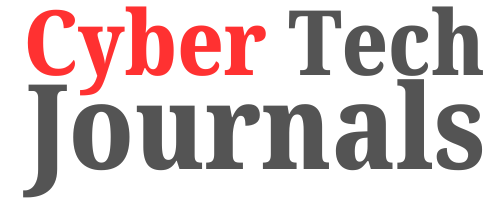
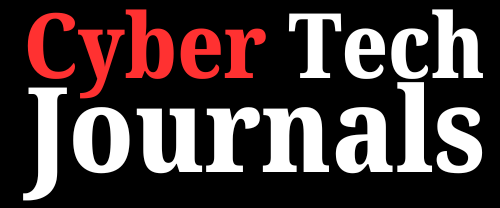


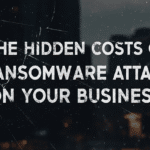
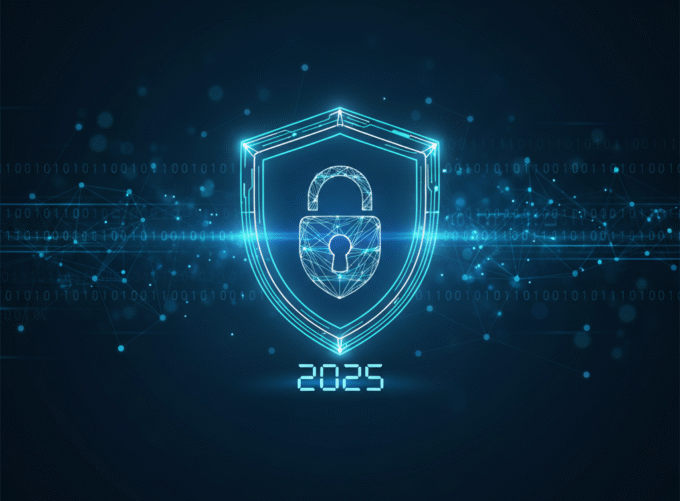






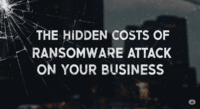


Leave a comment